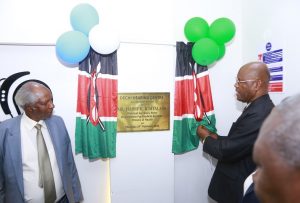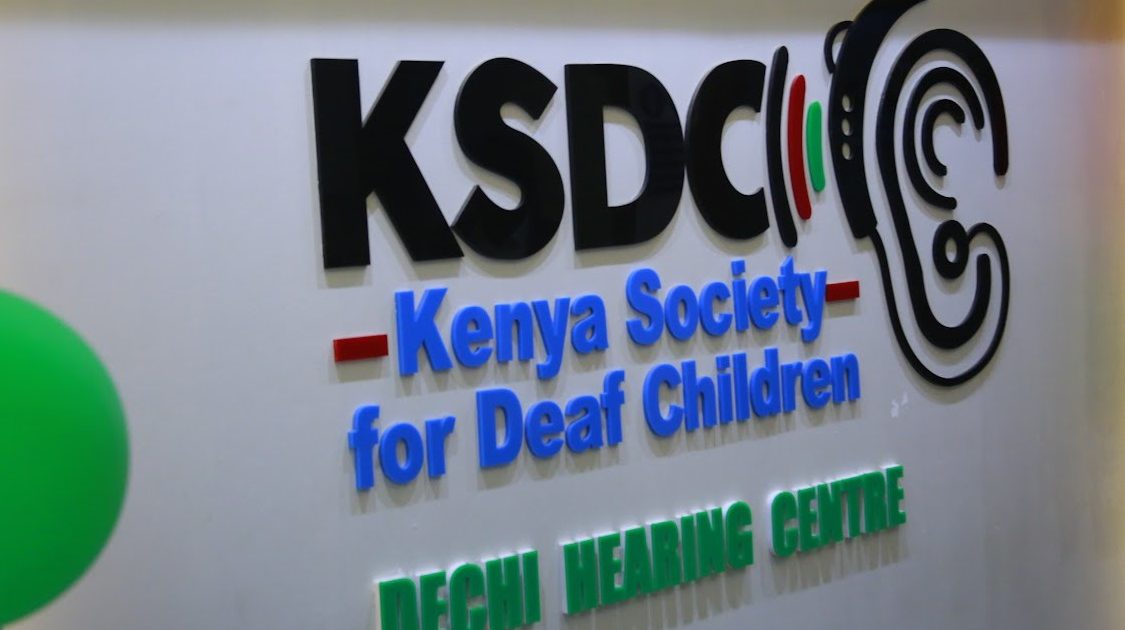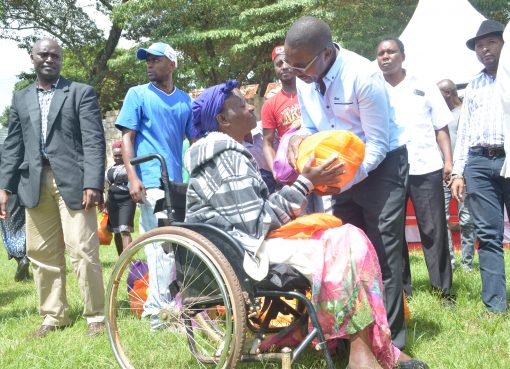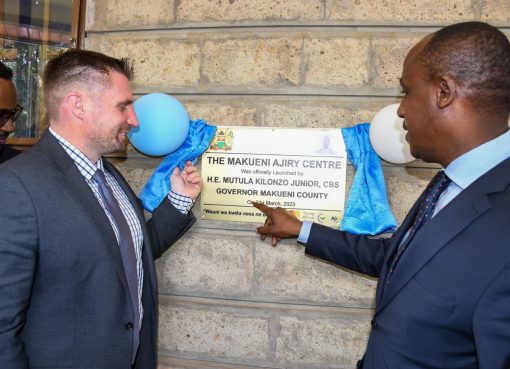Ear and hearing care (EHC) should be provided at all the levels of healthcare delivery, Principal Secretary, State Department for Medical Services Harry Kimtai has said.
The Ministry of health National Strategic Plan for Ear and Hearing Care (EHC) 2023-2028 guides on the establishment of at least one EHC clinic in every sub county.
It also guides on formation of community based EHC screening centers, school-based hearing screening programs, training of adequate personnel and having ear and hearing care commodities.
Currently, Kenya hearing impairment is the fourth leading cause of disability in the country.
Speaking when launching The Kenya Society for Deaf Children DECHI Hearing Clinic in Nairobi, PS Kimtai noted that there is need to scale up efforts towards the management of ear and hearing care.
In in a speech read on his behalf by Director Clinical Services Dr. Manasseh Bocha, the PS noted that the clinic could not have come at a better time as the Kenya Health Information System (KHIS) 2022 reported a total 837,416 ear diseases in the country with 264,789 cases being children under 5 years while 15 percent of adults above 50 years old have hearing problems.

“As the country’s health systems and policies move towards the attainment of Universal Health Coverage, ear and hearing care should be integrated within the systems to achieve accessible and affordable universal people centered ear and hearing care”, Kimtai said
He named some of the risk factors for acquired hearing loss as congenital infections, premature birth, in utero exposure to HIV, neonatal jaundice and also bacterial meningitis, and ototoxic medications such as those used to treat tuberculosis, pneumonia, or malaria.
Noise induced hearing loss, the PS said is also a public health concern due to inefficient implementation of rules and regulations on safety and effective noise reduction measures.
“Noise reduction measures should not only be implemented in occupational settings but also in social and entertainment venues in order to effectively employ hearing conservation measures that cut across the life course”, he said.
The PS congratulated Kenya society for Deaf children intention of scaling their operations across the country through the innovative use of mobile ear clinics and endorsed their appeal for support towards funding the noble venture of acquisition of mobile ear clinics.
He further commended the Kenya Society for Deaf Children for their efforts in the hearing and deafness space, especially in health and education advocacy but challenged the society to help scale the EHC ambitions as informed by the EHC National strategy with the same zeal and dogged focus that has seen KSDC support the establishment of Deaf schools across all the 47 counties.
“I challenge you to spearhead this initiative of establishment of at least one ear and hearing care clinic in every sub county and the formation of community based ear and hearing care screening centers, school-based hearing screening programs”, Kimtai said.
Chairman Kenya Society for Deaf Children, Francis Ng’ang’a said the prevalence rate of deafness is 6.3 per cent, translating to over 3 million Kenyans with mild, moderate, severe, or profound hearing loss. Within this demographic, he added that 900,000 individuals are classified as profoundly deaf, and 300,000 fall within the school-age bracket.
However, Ngang’a noted that only 20,000 of school-going age are currently enrolled in educational institutions in the 141 schools specifically catering to the needs of the deaf.
“The biggest challenge faced by Deaf Community in Kenya include lack of access to education; limited access to healthcare; communication barriers; lack of support services, discrimination and stigma”, he said.
The chairman noted that despite recent heightened focus on the issue of deafness, the category has largely been plagued by under-support and under-funding
The challenges facing the deaf still are largely unresolved and not in the mainstream focus of the national conversation space. Sign language is still yet to be scaled up while many of the children are still unable to attend school”, he reiterated
Nganga explained that the launched clinic located at Nachu building in upper hill Nairobi will provide audiology services, bursary services, education advisory and health services.
“Under the health function our main objective is to address hearing loss issues, and engage in primary, secondary and tertiary prevention of deafness and hearing loss among children and the youth”, he said
Nganga added, “This is but a first step in our stride in scaling this across the country. Going forward, we hope to extend our reach to more parts of the country, to ensure that every Kenyan has access to low cost or even free ear care”, he noted
The Chairman acknowledged that since not every parent, youth or child can reach the Nairobi based clinic, they hope to acquire, equip, and deploy fully equipped Mobile ENT Clinics that will transcend beyond Nairobi, to both urban and rural Kenya, to the remotest possible location in order to prevent, treat and rehabilitate hearing loss and also create awareness on deafness.
Nganga confirmed that KSDC is in the process of planning The Africa Conference on Deafness, ACD 2024 in the deaf empowerment ecosystem focusing primarily on the deaf child and seeking to take stock of the continent’s initiatives for empowering the deaf child.
He appealed to all Kenyans of good will to consider partnering with them and meet the cost of acquiring various mobile ear clinics so as to scale up their reach and be able to prevent avoidable deafness.
According to the World Health Organization (WHO) World Report on Hearing, 40 percent of hearing loss is unavoidable and identification and treatment of hearing loss typically occurs late.
Globally, 34 million children have deafness or hearing loss, of which 60 percent of cases are due to preventable causes. At the other end of the lifespan, approximately 30 percent of people over 60 years of age have hearing loss. Many of the impacts of hearing loss can be mitigated through early detection and interventions.
By Wangari Ndirangu




